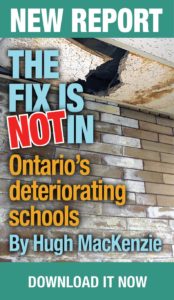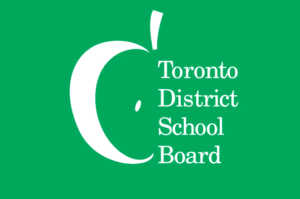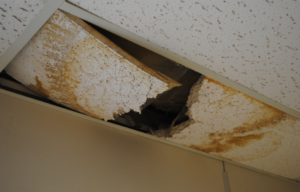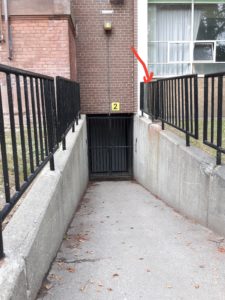The scores of parents, grandparents, teachers and school staff who contact Fix Our Schools with questions are really all asking the same two questions:
- How did the schools get to be in such bad shape?
- When are we going to Fix Our Schools?
 Economist Hugh_MacKenzie’s latest report, “Ontario’s deteriorating schools: The fix is not in” answers the first question. Since the Province took over funding of schools 20 years ago, the physical condition of Ontario’s schools has been a consistent casualty.*
Economist Hugh_MacKenzie’s latest report, “Ontario’s deteriorating schools: The fix is not in” answers the first question. Since the Province took over funding of schools 20 years ago, the physical condition of Ontario’s schools has been a consistent casualty.*
Fix Our Schools started with a room of parents in the local public school library wondering why our children’s school didn’t have proper heat, safe stairs, washroom stall doors, or space for them to sit in the cafeteria to eat lunch (many of them ate on the floor).
Some parents raised concerns about asbestos and peeling paint, which likely contained lead. We discussed how our school actually had an evacuation protocol in the winters so that when the boiler failed we’d know where to pick up our children. We also noted that the newer addition to the school was literally sinking. Continue reading








